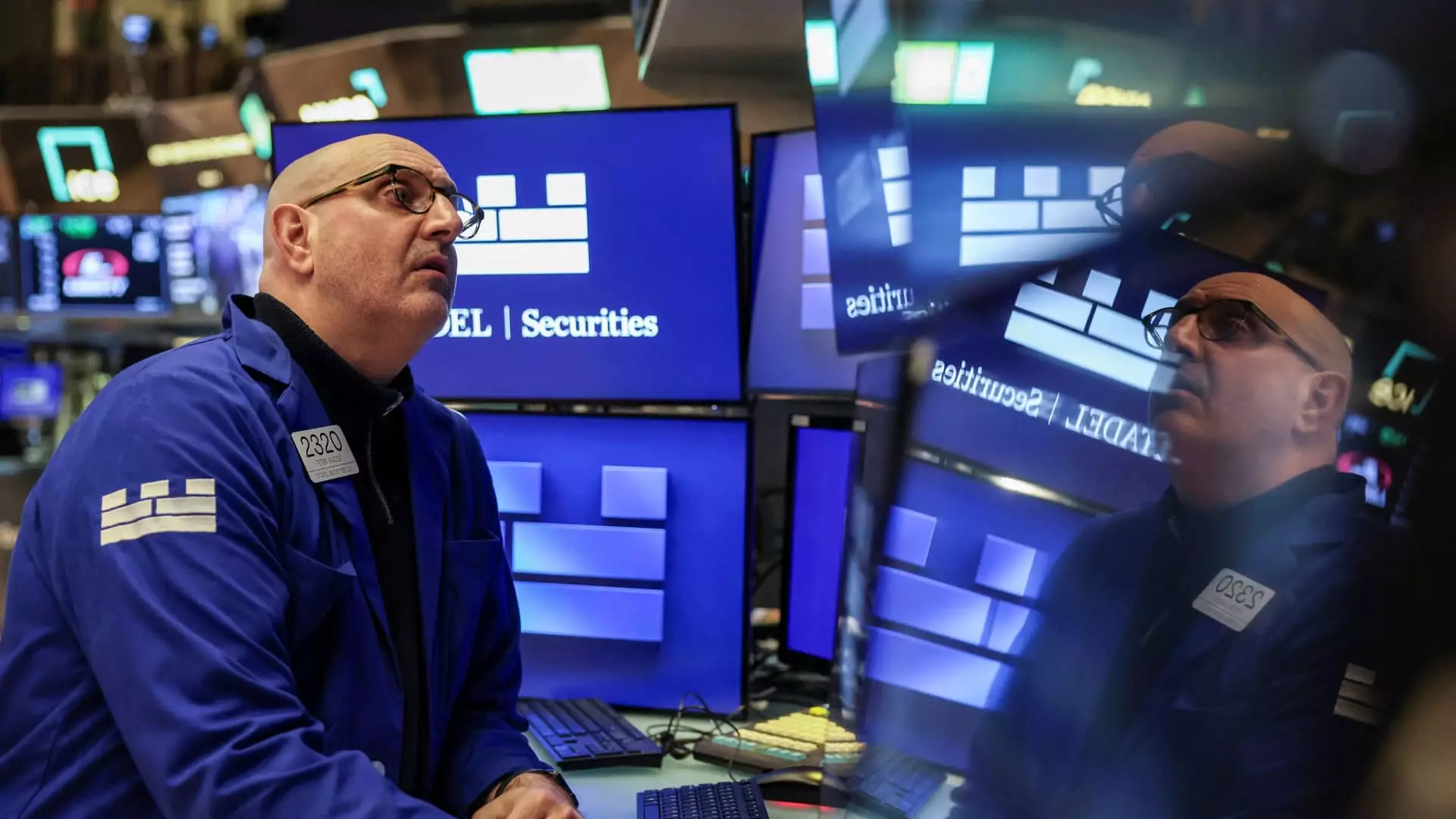April 2 marks a pivotal day on Wall Street, potentially laden with consequences as traders brace for clarity—or the lack thereof—concerning U.S. tariffs. Despite the anticipation surrounding this date, optimism seems largely misplaced, especially as the recent market turbulence stirs anxiety. Investors have faced a conundrum this year as they attempt to decode the full implications of President Trump’s trade policies, which appear to be reshaping international trade dynamics with alarming speed.
The S&P 500 index has dipped over 8% from its all-time high, while the tech-heavy Nasdaq Composite has plunged over 13% from its recent zenith, painting a troubling picture of investor sentiment. Amid these unsettling statistics, many market participants are grasping for reassurance that President Trump’s forthcoming announcement from the Rose Garden will provide the definitive roadmap they crave. Yet, the prevailing skepticism suggests that any mere outline of tariff intentions will likely deliver fleeting comfort at best.
The Inadequacy of Ambiguity
The financial realm is not merely looking for a surface-level consensus but is instead demanding a comprehensive and detailed framework concerning tariffs. Gabriela Santos, a key figure at J.P. Morgan Asset Management, articulates this sentiment effectively. In her view, a mere framework announcement won’t be enough to instigate the necessary confidence for a meaningful market rally.
For stabilization to occur, details such as specific tariffs on designated countries for defined periods are critical. Only then can the markets genuinely digest the unfolding economic landscape. Investors, inundated with information and disinformation alike, are just beginning to navigate the multiple implications of tariff-related developments. As the specter of uncertainty looms larger, it’s becoming increasingly clear that confidence is both fragile and elusive in this environment.
Historic April Rebounds Cannot Drown out Current Concern
While April is traditionally a strong month for equities—where the S&P 500 has averaged a 2.5% gain since 1950—this historical trend feels almost irrelevant given the intensity of current fears surrounding tariff policies. Investors cannot afford to rely on favorable historical averages when confronted with potential maximalist tariffs that could broadly impact their portfolios. Predictions of this kind risk driving more alarm into an already jittery marketplace.
The anxiety isn’t unwarranted. Brett Ryan, a seasoned economist at Deutsche Bank, highlights the dire implications of a maximalist tariff approach that targets an array of countries for punitive economic measures. If the average tariff rate escalates beyond projections, the repercussions for GDP growth could be substantial, leading to heightened inflation and the specter of stagflation.
Forecasts Are Being Downgraded
Investor sentiment has soured so much that analysts are beginning to reevaluate their year-end targets. David Kostin of Goldman Sachs recently lowered his projections for the S&P 500, reflecting growing pessimism about the market’s capacity to recover under a choked trading environment fueled by tariffs. While Kostin’s previous forecasts were already optimistic, the potential for escalating trade conflicts has resulted in downgrades that echo through the financial landscape.
In such a tumultuous setting, the outlook for equity investment becomes rife with uncertainties that weigh heavy on both seasoned investors and novices alike. The ever-present possibility of recession is now cemented in the assumptions of many market experts, as further protracted discussions around tariffs threaten to stifle growth in numerous critical sectors.
Navigating the Path Ahead: Challenges Abound
Christopher Harvey’s insights summarize the worries entrenched within the current market climate. Despite his ongoing constructive stance on equities, he acknowledges the myriad risks posed by tariff policies and the potential for a prolonged negotiation process that could drag on indefinitely. The inertia evident in governmental responses may spawn lengthy deliberations, complicating any hope for swift resolution.
The uncertainty surrounding timelines and the scope of tariff implementation adds layers of complexity for investors wrestling with volatile stock valuations. As Harvey notes, the labyrinthine path to finding common ground could persist for weeks or even months, leaving investors grappling with a reality defined by unpredictability.
In a landscape marked by confusion, the gilded notion of “liberation day” touted by the White House serves more as a provoking rallying cry than a solid promise. Without adequate clarity, the prevailing sentiment will likely remain one of hesitance, with many investors holding their breaths as they navigate this fraught moment in U.S. economic policy.
In a world where uncertainty reigns supreme and clarity seems like an elusive hope, it’s imperative for market players to cultivate a resilience that will allow them to weather this storm—one fraught with convoluted tariffs and shifting political winds.

